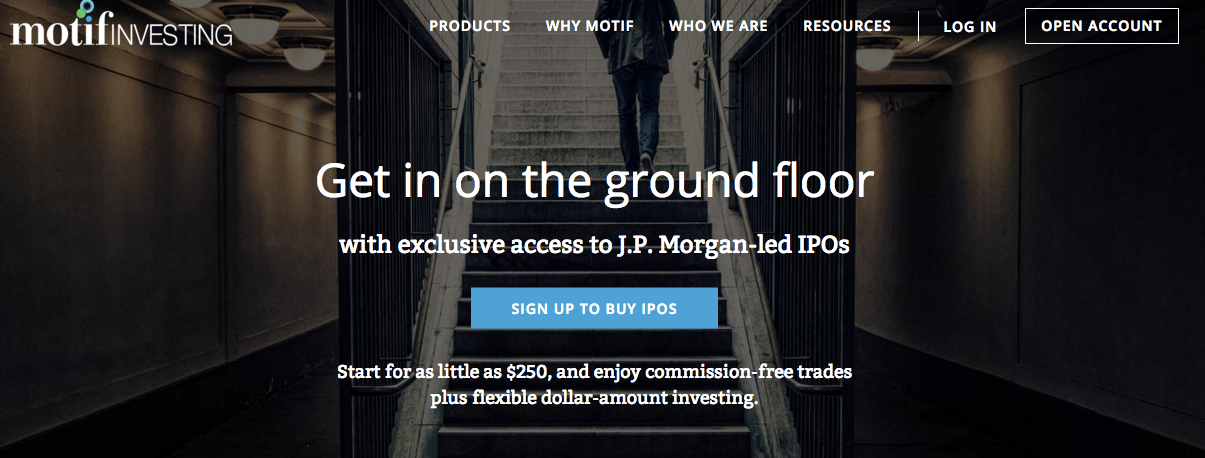Chase Pay lands deal with Shell, access to 20 million daily customers
Top 10 things JPM’s Jamie Dimon said about fintech
Is fintech really headed for a downturn?
5 trends we’re watching this week
[alert type=yellow ]Every week at Tradestreaming, we’re tracking and analyzing the top trends impacting the finance industry. The following is a list of important things going on we think are worth paying attention to. For more in depth trendfollowing, subscribe to Tradestreaming’s newsletters .[/alert]
- How Payoff is shifting the conversation about consumer debt to financial wellness (Tradestreaming): Payoff seems to be genuinely interested in helping its clients find their way out of debt and start saving. Pretty weird for a company that extends credit.
- Banks should take fintech seriously, not panic, but make a gameplan (McKinsey): A new McKinsey report hit the wires this week – it’s a sanguine analysis meant for finance professionals. “Specifically, this means that banks should be less preoccupied with individual fintech attackers and more focused on what these attackers represent—and build or buy the capabilities that matter for a digital future.” Worth a read.
- J.P. Morgan acquires nearly $1 billion worth of LendingClub loans — Sources (Nasdaq): J.P. Morgan has agreed to acquire nearly $1 billion worth of personal loans arranged by LendingClub, according to people familiar.
- Why one of the best fintech investors, Foundation Capital’s Charles Moldow, invests only in B2C (Tradestreaming): Foundation has one of the strongest fintech portfolios and General Partner, Charles Moldow (LendingClub, OnDeck Capital, Envestnet, Motif Investing) explains why he sees so much more room to run in disrupting finance.
- Quicken Loans getting into personal loans (Detroit Free Press): Quicken this week launched RocketLoans, an online service offering cash loans of $2,000 to $35,000 to prospective borrowers with good credit scores and financial histories. The loans have fixed terms of three to five years and carry interest rates ranging from just over 5% to the low or mid-teens.
5 trends we’re watching this week
[alert type=yellow ]Every week at Tradestreaming, we’re tracking and analyzing the top trends impacting the finance industry. The following is a list of important things going on we think are worth paying attention to. For more in depth trendfollowing, subscribe to Tradestreaming’s newsletter .[/alert]
1. Goldman, JPMorgan Seen as Fintech Winners While AmEx Suffers (Bloomberg)
Goldman Sachs and JPMorgan will probably benefit most from the coming wave of financial technology disruption, rather than being supplanted by startups driving the change, according to a new survey.
2. 2015 Automated Platform Performance Review: Betterment vs. Wealthfront (Meb Faber)
Meb Faber with some good analysis on how Betterment performed this year vs. Wealthfront (and where Schwab and Vanguard come in). Hint: roboadvisors are neither “safe” nor are they one-size-fits-all.
3. Inside J.P. Morgan’s Deal With On Deck Capital (WSJ)
As part of the deal, OnDeck won’t put up any capital and will get fees to originate and service loans for J.P. Morgan, many with a value up to $250,000, previously considered too small to move the needle at the big bank. OnDeck also can use data it gleans from the partnership to improve its lending models. “We think it’s a watershed partnership,” said OnDeck CEO Noah Breslow.
4. Microinsurance Is The Answer To The Insurance Industry (TechCrunch)
In the wake of Lemonade’s giant seed round, the tech industry is buzzing thinking about the potential of disrupting insurance. Whether it’s peer to peer models or microinsurance, Silicon Valley is coming.
5. Nasdaq Linq Enables First-Ever Private Securities Issuance Documented With Blockchain Technology (Nasdaq)
Transaction by Chain.com Marks Significant ‘Proof of Concept’ and Major Step Forward in Use of Blockchain. Blockchain Holds Potential for 99%.
JPMorgan: King of the online lending ball names his queen, launching OnDeck stock
Online lenders have an issue (especially the publicly traded ones, like OnDeck Capital ($ONDK) and Lending Club ($LC)). They may have come from nowhere over the past couple of years to be presently underwriting billions of dollars of loans a year. But this growth comes at a price, as borrower acquisition is proving to be quite expensive.
A recent WSJ article described how the marketplace lenders (in this case, Lending Club and Prosper) are resorting to old-school direct marketing techniques, sending millions of monthly offers via the postal service, to feed their appetite for loan acquisition. Efi Pylarinou conducted an interesting analysis this week that demonstrated that for the short term, at least, customer acquisition costs (CAC) for the online lenders should outstrip their margins.
Partnerships between bank and online lender are win-win
So, to grow profitably, the publicly traded online lenders (private ones aren’t subject to this level of transparency) must find a more efficient way to onboard new borrowers at scale. One immediate way to do this is via partnerships. Large institutions who own the relationships with individuals (personal loans) or SMBs (business loans) but are not yet in the online lending space are looking to make build/buy decisions right now. In rolling out their own online lending offerings, these incumbent financial institutions have to build their own platforms or partner with existing online lenders and leverage their technology platforms.
Partnerships like these have the potential to significantly benefit both incumbent and startup. A partnership enables a large bank to launch quicker, leveraging the operations and technologies of a partner. The younger online lender brings its technology to the party and gets a partner who is going to take care of borrower acquisition — the partner already owns the relationships.

JPMorgan is the crown jewel of these types of partnerships. It’s a massive financial institution, owns retail and business banking relationships and doesn’t have its own online lending platform in the market, yet. So, just a slight mention of a potential partnership yesterday by the bank’s CEO, Jamie Dimon, at a Washington panel was enough to send OnDeck’s stock tanking almost 10% on the day. It was assumed at the time that the partnership would go to Lending Club as there was some speculation JPM would buy LC at some point. But that never materialized — so when it came to a potential partnership, speculation was rife that it would go to LC, sending LC stock up nearly 6% on the day.
But a funny thing happened later last night: JPMorgan announced it was partnering up with OnDeck instead. Today, ONDK soared +30% on the back of the news, picking up an upgrade and price target hikes along the way. According to the WSJ, here’s the early look of the partnership:
Many details of the arrangement still need to be worked out, but the loans will be marketed under the brand of J.P. Morgan Chase and reside on the bank’s balance sheet, according to a person familiar with the matter. That would make OnDeck more of a technology vendor for the bank than a lending partner.
Of course, this is big news for the upstart online lender and there’s still longer-term risk that JPM uses the partnership to enter the market while it continues to build its own platform. But for the time being, JPMorgan has indeed chosen his queen.
Photo credit: mark sebastian / VisualHunt / CC BY-SA
JP Morgan, Motif Investing open up IPO investing
Since its launch, Motif Investing has championed creating low-cost, high-value portfolio creation tools for individual investors.
Founder and CEO of Motif, Hardeep Walia joined me on the Tradestreaming Podcast early in the company’s maturation cycle to talk about how Motif fits into the historical narrative of opening up investing tools and tech to individual investors:
So, what we do is we create indexes around these ideas and we focus on making investing very intuitive. It is as simple as, “I see something, an idea that I want. I want to put money to work and I don’t necessarily want to spend tons of time messing around with research in stocks, because I believe the index will do its job.” Then, we have very sophisticated investors who say, “You know what, just give me a starting point for a portfolio of stocks that actually act on these ideas,” and that’s what Motif is.
Motif announced today that it would take another step to opening up a traditionally opaque part of the investing world: IPOs. As part of a partnership with JP Morgan, the online broker is offering everyone access to IPO shares with as little as a $250 investment.
The new partnership “will broaden access to IPOs to more individual investors,” said Michael Millman, Co-Head of Americas Equity Capital Markets and Head of Technology Investment Banking at J.P. Morgan, in a statement. “Motif’s innovative and easy to use platform is a cutting-edge, differentiated way for issuers to reach investors.” J.P. Morgan will be encouraging its IPO companies to participate in the Motif program. Source
Motif appears serious in bringing its style of investing to the IPO market and it looks like JP Morgan may be the first of bulge bracket firms that bring offerings to the startup online broker.
IPO markets: Profitable, broken, and in need of fixing
IPOs have traditionally been a black box of the brokerage industry. “Book building” for IPOs, the process through which brokers went out to their clients to match supply and demand for shares, was completely opaque. Because IPO shares frequently pop after they list for trading, shares of top offerings were frequently reserved for the best customers of brokerage firms (high net worths and hedge funds).
In sought-after IPOs, it was very hard for general investors to get their hands on them. Because of such scarcity, investors requested larger than appropriate allocations for their portfolios in the hope that they’d end up with a better size allocation when the brokerage firms cut back their customers back . Because of this dynamic, in lackluster public offerings, investors frequently got “stuffed” with more shares than they really wanted.
The IPO process is one of the last holdouts in the face of digital disruption and that’s because IPOs play an important role in the brokerage business — they were a way for the brokerage firms to reward their best customers. Investment banks frequently underprice shares on their floats, providing quick profits to buyers of shares. The other side of this coin is that companies going public leave money on the table because of this underpricing. Investment banks come out looking good and brokerage firms are lauded by their customers.
Historically, there have been various attempts at disrupting the IPO process, including:
[x_icon_list]
[x_icon_list_item type=”dollar”]Dutch auctions: Investment bank, Hambrecht pioneered a form of dutch auction for IPOs, something it calls OpenIPO. In this model, the investment bank collects bids from all interested investors, big and small, and groups them by how much each is willing to pay for a share. Its bankers then count down from the top bid until they reach the highest price at which the selling company could sell all of the shares it wants to offer. The company can choose that price or, for various reasons, a lower one. Hambrecht then sells at the chosen price all the shares that were bid at that price or higher. One of the most famous IPOs to implement the OpenIPO process was Google, but few companies have really followed suit.[/x_icon_list_item]
[x_icon_list_item type=”dollar”]Equity crowdfunding platforms: With various new regulation in place (2012’s JOBS Act), the market has been kind of waiting to see equity crowdfunding platforms (like AngelList, CircleUp, and OurCrowd have popularized) perform the role of taking a private company into the public realm. It hasn’t quite happened, as regulation still relegates participation on crowdfunding platforms to accredited investors. It will take some more time before the general public will get a chance to transact in private companies.[/x_icon_list_item]
[x_icon_list_item type=”dollar”]Direct to consumer: There are a few firms like Cutting Edge Capital that working on Direct Public Offerings, a takeoff of the IPO but simpler and more accessible to general companies looking to list on a local exchange. Paperwork, filings are all easier to get going and it enables a company to market its securities to a local audience. Other firms, like Loyal3 , are creating investment platforms that make ease the IPO marketing for consumer brands and help them provide shares to loyal customers. Companies like GoPro and GoDaddy have used Loyal3 to distribute shares to their customers.[/x_icon_list_item]
[/x_icon_list]
Motif Investing’s approach is to create a personalized investing experience around individual investors. Individual investors can create thematic portfolios (called, motifs) and trade them with one click for a low fixed fee. Motif customers can share and implement company-built motifs or use those shared by others on the platform.
Who knows, maybe an IPO Motif is in the works.
[x_share title=”Share this Post” facebook=”true” twitter=”true” linkedin=”true” email=”true”]
[x_author title=”About the Author”]














